View in other NatureServe Network Field Guides
NatureServe
Montana
Utah
Wyoming
Idaho
Wisconsin
British Columbia
South Carolina
Yukon
California
New York
Bractless blazingstar - Mentzelia nuda
State Rank Reason (see State Rank above)
Rare and peripheral in Montana, where it is known from a few locations in the eastern half of the state. Additional data on population levels and trends are needed.
General Description
Bractless Mentzelia is an herbaceous biennial or short-lived perennial with one to a few erect, branched stems that arise from a taproot and are up to 1 m high. The lance-shaped, alternate leaves are 4-10 cm long, have deeply-toothed margins, and are petiolate below but sessile above. Foliage is covered with short, barbed hairs that cause it to stick to clothing like velcro. Flowers that open in late afternoon are borne on short stalks arising from the axils of reduced upper leaves, or bracts. Each flower is 4-9 cm across and has 10, non-overlapping, white petals and numerous exserted stamens. The calyx forms a deep bowl with 5 narrow, pointed lobes that are 10-25 mm long; it also contains the ovary and bears the stamens. The cylindrical seed capsules are 2-3 cm long.
Phenology
Flowering in July.
Diagnostic Characteristics
Mentzelia decapetala has ten white petals, its larger flowers are 8-15 cm across, and its petals overlap.
Species Range
Montana Range
Range Descriptions
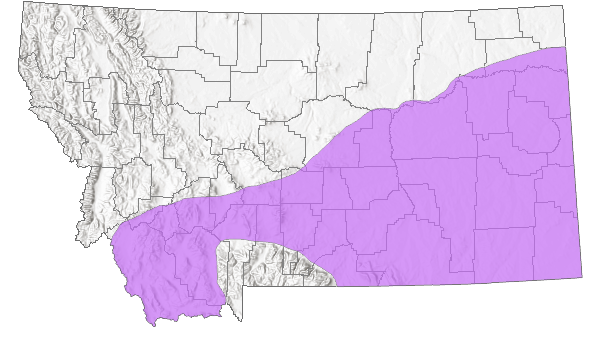
 Native
Native
Range Comments
E. MT and SD south to CO, KS, and TX. Peripheral.
Observations in Montana Natural Heritage Program Database
Number of Observations: 14
(Click on the following maps and charts to see full sized version)
Map Help and Descriptions
Relative Density
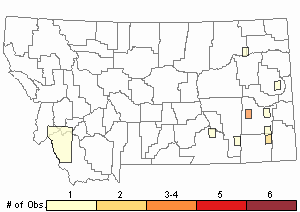
Recency
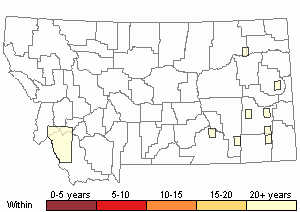
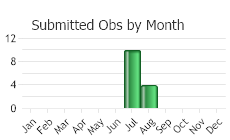
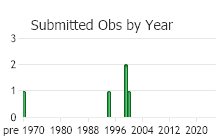
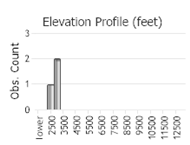 (Observations spanning multiple months or years are excluded from time charts)
(Observations spanning multiple months or years are excluded from time charts)
Habitat
Sandy or gravelly soil of open hills and roadsides on the plains.
National Vegetation Classification System Groups Associated with this Species
Grassland
Lowland - Prairie Grassland
Sparse and Barren
Sparse and Barren
Ecology
POLLINATORS The following animal species have been reported as pollinators of this plant species or its genus where their geographic ranges overlap:
Bombus centralis,
Bombus fervidus,
Bombus huntii, and
Bombus pensylvanicus (Thorp et al. 1983, Williams et al. 2014).
INSECT INTERACTIONSIn other species of Mentzelia, extrafloral nectaries have been shown to attract ants which have been observed to fend off seed predators (Keeler 1981). They suggested the continued production of nectar after the end of flowering serves as a mechanism of seed protection.
Stewardship Responsibility
Threats or Limiting Factors
STATE THREAT SCORE REASON
Threat impact not assigned because threats are not known (MTNHP Threat Assessment 2021).
References
- Literature Cited AboveLegend:
 View Online Publication
View Online Publication MTNHP Threat Assessment. 2021. State Threat Score Assignment and Assessment of Reported Threats from 2006 to 2021 for State-listed Vascular Plants. Botany Program, Montana Natural Heritage Program, Helena, Montana.
MTNHP Threat Assessment. 2021. State Threat Score Assignment and Assessment of Reported Threats from 2006 to 2021 for State-listed Vascular Plants. Botany Program, Montana Natural Heritage Program, Helena, Montana. Thorp, R.W., D.S. Horning, and L.L. Dunning. 1983. Bumble bees and cuckoo bumble bees of California (Hymenoptera: Apidae). Bulletin of the California Insect Survey 23:1-79.
Thorp, R.W., D.S. Horning, and L.L. Dunning. 1983. Bumble bees and cuckoo bumble bees of California (Hymenoptera: Apidae). Bulletin of the California Insect Survey 23:1-79. Williams, P., R. Thorp, L. Richardson, and S. Colla. 2014. Bumble Bees of North America. Princeton, NJ: Princeton University Press. 208 p.
Williams, P., R. Thorp, L. Richardson, and S. Colla. 2014. Bumble Bees of North America. Princeton, NJ: Princeton University Press. 208 p.
- Additional ReferencesLegend:
 View Online Publication
View Online Publication
Do you know of a citation we're missing? Boggs, K. W. 1984. Succession in riparian communities of the lower Yellowstone River, Montana. M.S. Thesis. Montana State University, Bozeman, 107 pp.
Boggs, K. W. 1984. Succession in riparian communities of the lower Yellowstone River, Montana. M.S. Thesis. Montana State University, Bozeman, 107 pp. Brown, D. K. and R. B. Kaul. 1981. Floral structure and mechanism in Loasacae. American Jounal of Botany 68(3):361-372.
Brown, D. K. and R. B. Kaul. 1981. Floral structure and mechanism in Loasacae. American Jounal of Botany 68(3):361-372. Lesica, P., M.T. Lavin, and P.F. Stickney. 2012. Manual of Montana Vascular Plants. Fort Worth, TX: BRIT Press. viii + 771 p.
Lesica, P., M.T. Lavin, and P.F. Stickney. 2012. Manual of Montana Vascular Plants. Fort Worth, TX: BRIT Press. viii + 771 p. Lesica, P., M.T. Lavin, and P.F. Stickney. 2022. Manual of Montana Vascular Plants, Second Edition. Fort Worth, TX: BRIT Press. viii + 779 p.
Lesica, P., M.T. Lavin, and P.F. Stickney. 2022. Manual of Montana Vascular Plants, Second Edition. Fort Worth, TX: BRIT Press. viii + 779 p.
- Web Search Engines for Articles on "Bractless blazingstar"





